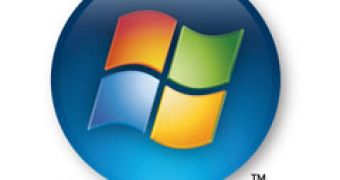In future versions of the Windows operating system, users should expect a completely reinvented Windows taskbar. Microsoft has already evolved the strip of desktop real estate at the bottom of the screen in accordance with various versions of Windows; still, the taskbar has remained essentially loyal to the same concept. But it is from the rectangular Start Menu in Windows XP to the Start Menu Sphere in Windows Vista and beyond for the Redmond company. And Microsoft has a chance, perhaps even with the successor of Windows Vista, referred to internally with the product number Windows Seven, to further advance the taskbar. At least this is the direction hinted by the "Supporting user multi-tasking with clipping lists" patent Microsoft has filed with the Patent and Trademark Office, as InformationWeek pointed out.
"A method for managing windows in a display is disclosed. The method comprises forming clippings for windows located in a focal region of a display; displaying the clippings in a peripheral region of the display; hiding the windows in the focal region of the display; indicating the states of the clippings; and in response to a user action, displaying the windows and hiding the clippings. A clipping comprises an image of a region of a window and an icon. A clipping is formed when a window is dragged from the focal region into the peripheral region or when the minimize button of a window is clicked," Microsoft described in the patent.
The patent is essentially presenting the way that clipping lists technology will overhaul the taskbar or the sidebar. Users will be permitted to better manage the desktop space available by assigning opened explorer windows to the clipping lists. And the fact of the matter is that a redesign of the taskbar is long overdue, and by the looks of this patent, Microsoft will aim to combine the functionality of the traditional taskbar with the new capabilities introduced by the Windows Sidebar in Windows Vista. "A clipping list is formed when a clipping is moved near another clipping. A clipping moved near a clipping list is inserted into the clipping list. Indicating the change state of a clipping comprises detecting that the contents of the clipping are changing; providing a visual cue for the clipping; changing the appearance of the visual cue in response to detecting that the contents of the clipping are no longer changing; and removing the visual cue in response to a user action. The change state of a clipping in a clipping list is propagated to the clipping list," Microsoft added in the patent.
Of course that this is just a patent. It could mean that Microsoft is indeed looking to revamp the taskbar with Windows Seven, and then again it could be nothing more than paper work. But with Steven Sinofsky, Senior Vice President, Windows and Windows Live Engineering Group at the head of the Windows Seven Project the Office 2007, graphical user interface redesign might just be repeated.

 14 DAY TRIAL //
14 DAY TRIAL //